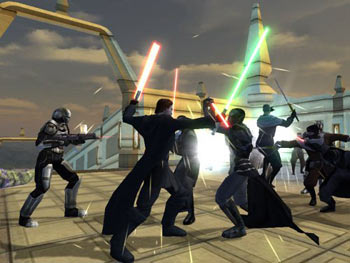There are those among us who feel games are becoming increasingly predictable – a marketing dominated creative process where developers simply take elements from other successful games, try to throw in some token new thing and call it a day. So I thought I’d just throw out some slightly different ideas, just for the hell of it. If a butterfly flapping its wings can truly destroy the universe (as my people believe) then maybe this article can, uh, take down some butterflies.
Ashes of Destiny: The Cricket Saga
Okay, so you take a sport that everybody loves (Cricket) and you combine it was a genre that everybody really ought to love (RPGs) and this is what you get. I may also be liberally borrowing from the film Lagaan: Once Upon a Time in India, but I can make it different enough to stop the lawyers from getting involved. → For I have come to turn a man against his father, a daughter against her mother, a gamer against their game.





